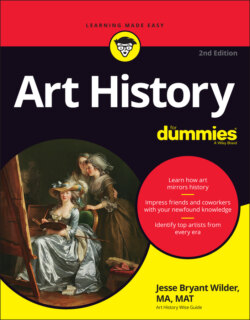Читать книгу Art History For Dummies - Jesse Bryant Wilder - Страница 135
MEDEA GETS AWAY
ОглавлениеThe Medea krater, which was painted about 30 years after Euripides’ famous tragedy Medea premiered in Athens, depicts the play’s climax: Medea has just murdered her sons to get revenge on her unfaithful husband, Jason (of Jason and the Argonauts fame). With sword raised, she makes her getaway in a dragon-drawn chariot, a loan from her grandfather Helios, the god of the sun. The defeated Jason looks up helplessly at her, his weapon dangling uselessly at his side. The winged women flanking Medea, the daughters of the night, will fight for him. They are furies whose job is to avenge within-the-family murders. But they’ll have a tough time getting past the sunburst of Helios.
Notice the fine detailed work in the Medea krater shown in Figure 7-10 and described in the sidebar “Medea gets away.” This much detail could not have been achieved in the black-figure technique.
Leonard C. Hanna, Jr. Fund / Cleveland Museum of Art
FIGURE 7-10: The red-figure Medea krater illustrates the climax of Euripides’ tragedy Medea. Here Medea makes her getaway after slaying her sons, c. 400 BC.
